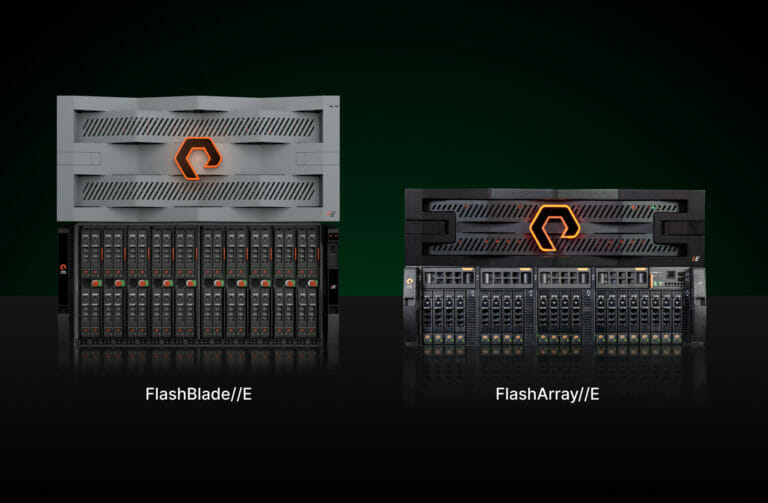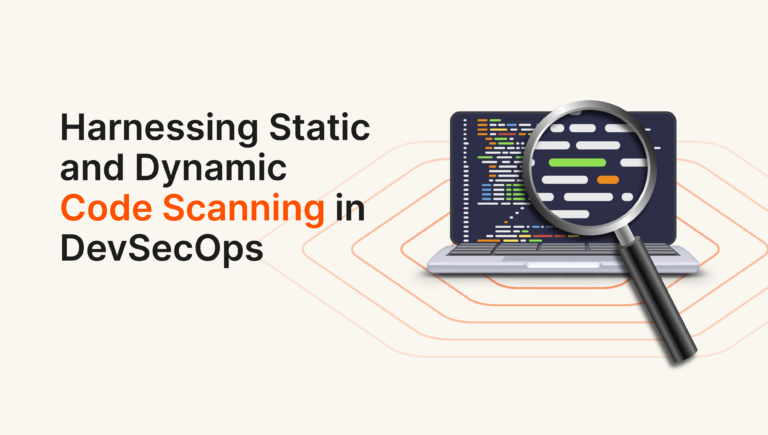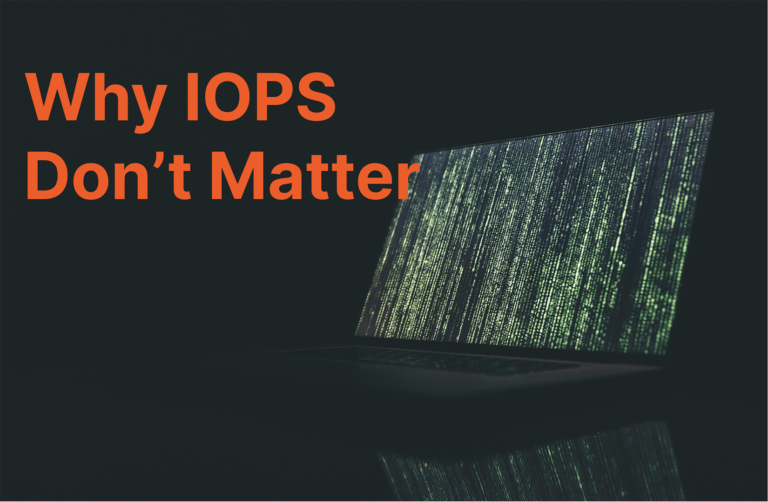With the expansion of the Pure//E™ family to include the new FlashArray//E™ in addition to the revolutionary FlashBlade//E™, Pure Storage continues to disrupt the data storage industry—in this case, by offering customers even more choice for an all-flash alternative to hard disk storage array offerings. Possessing up to 20 times higher reliability, one-fifth the space and power, 85% less e-waste, and 40% lower TCO over six years, but at the same acquisition cost as all-disk storage, the Pure//E family now eliminates the need for any spinning rust in data centers. Basically, the end for hard drives is on the horizon.
Introducing FlashArray//E, the Newest Member of the Family
Expanding the Pure//E family, FlashArray//E further extends the energy savings and operational benefits of FlashArray™ to even more of the data repository market previously served only by disk storage.
Targeting capacity starting at 1PB, FlashArray//E broadens customers’ options to tackle data growth without needing to expand aging, highly inefficient, and expensive-to-run disk systems. Customers never need to worry about running out of capacity with seamless scale up to 4PB at the same phenomenal pricing, operational efficiency, and energy savings that FlashBlade//E provides.
Built on the same foundation as FlashArray//X™ and FlashArray//C™, FlashArray//E allows you to take advantage of everything that makes Pure famous—simplicity, six nines of reliability, and non-disruptive updates and upgrades. And FlashArray//E will include the upcoming release of the industry’s largest 75TB QLC DirectFlash® Modules (DFMs). Where spinning disk capacity growth has stagnated, Pure has continued to innovate. In fact, we are targeting 300TB modules as soon as 2026. So, even though data growth will continue to compound, our products are built for the future. With our new 75TB QLC DFMs, you now get an all-flash data storage solution that consumes up to 80% less energy and is 20 times more reliable than spinning disks.
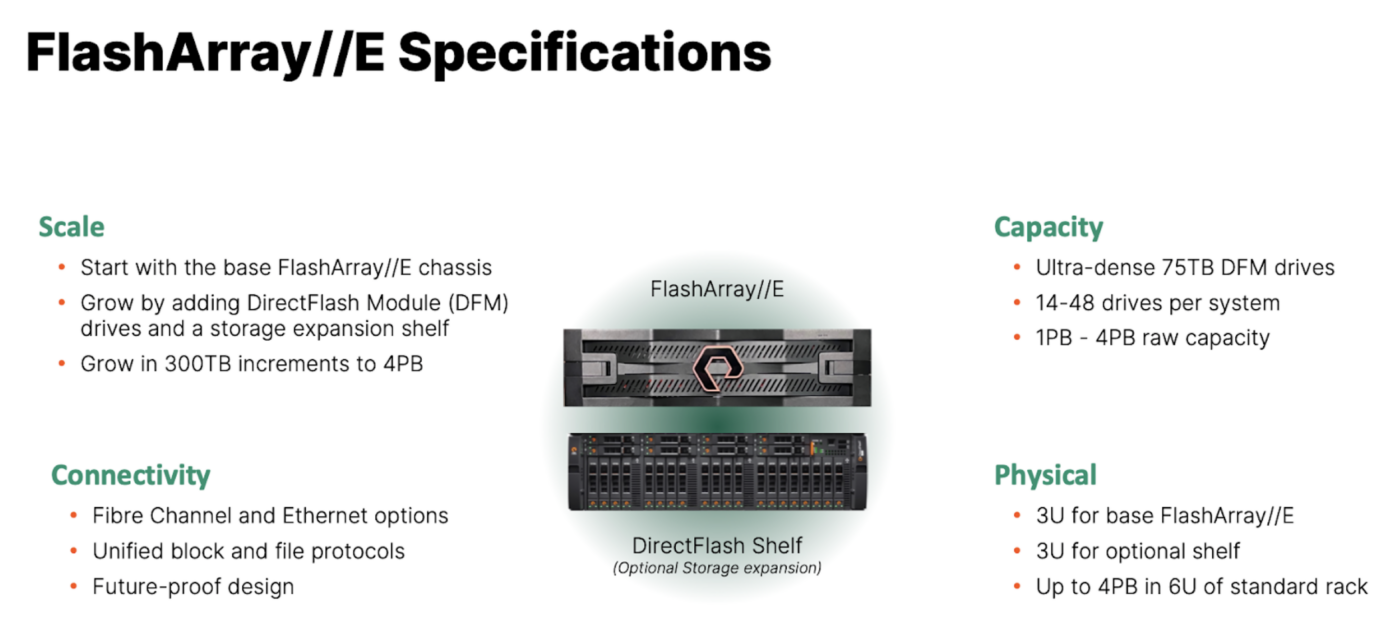
While FlashBlade//E supports unified file and object workloads, FlashArray//E supports unified block and file, with a high data reduction rate when data is highly dedupable. So no matter the protocol, there’s a Pure//E family model for everyone. Customers no longer have to settle for hard disks to get a low up-front price. Instead, they now get easier and more reliable access to data managed through the same Purity interface as the rest of their Pure solutions.
Additionally, Pure provides customers multiple choices on how they can acquire both FlashArray//E and FlashBlade//E. Customers can choose traditional CAPEX purchase, or deploy through either a new //UDR service tier of Pure’s Evergreen//One™ storage-as-a-service (STaaS) subscription, or through Evergreen//Flex™. Evergreen//One is an SLA-driven STaaS offering that provides pay-as-you-go economics and a scalable cloud experience with the control of on-premises deployment. Evergreen//Flex provides customers the ability to own their storage arrays while still taking advantage of consumption economics based on asset utilization.
Pure’s All-flash Data Center Vision Is Now Reality
Pure Storage started by envisioning a day in which all data centers would run on all-flash. Our belief was—and still is—that this transformation was inevitable: the economic, technology, and environmental advantages would become insurmountable over time and spinning rust drives would become relics, relegated to the dustbin of history.
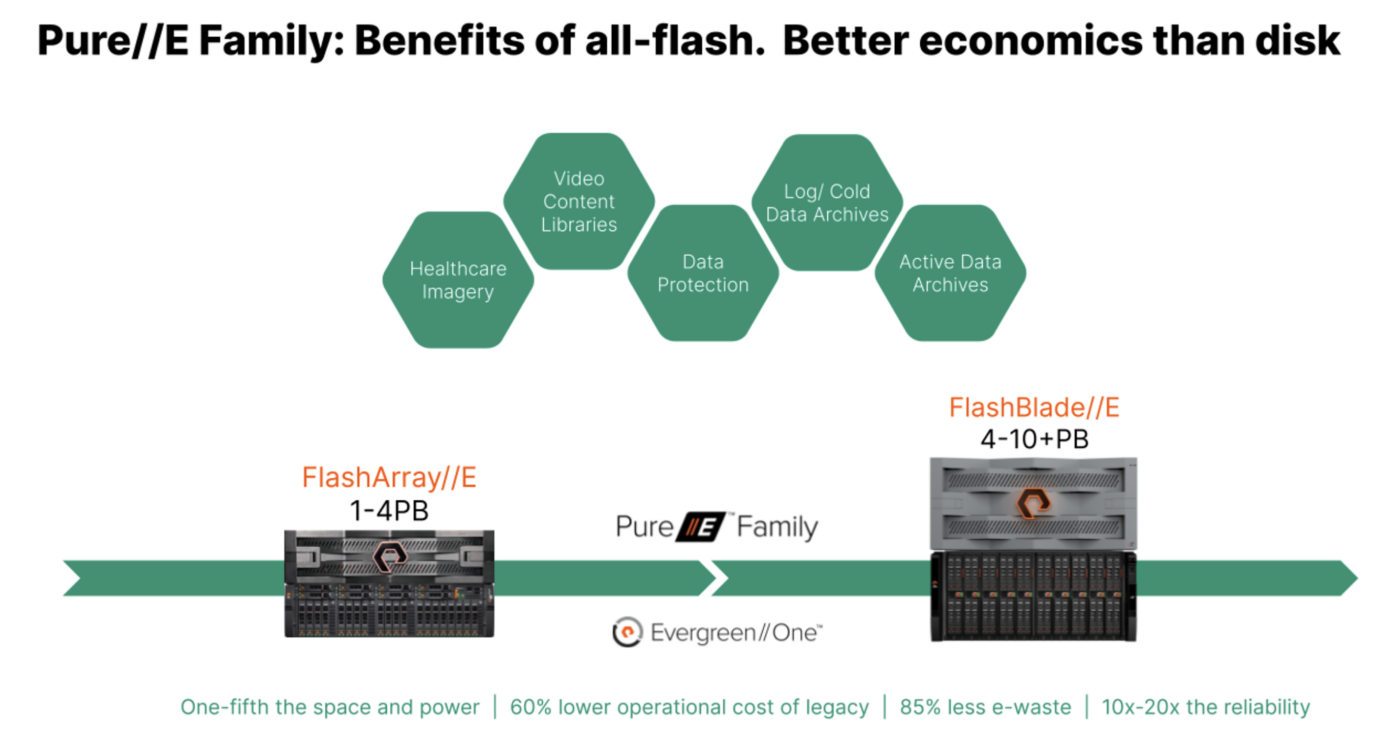
With the introduction of FlashArray//E, in addition to the higher performance and low-latency use cases that are being well-served by flash already, customers can now adopt all-flash Pure//E products for use cases like content libraries, surveillance video, healthcare imaging (PACS), long-term retention, data protection, active archive—even logs, cold archives, and so many other use cases that are cost-sensitive and have thus traditionally been limited to all-disk storage.
Come In from the Cold
Speaking of cold archives, let’s be honest—who wants a cold archive when you can have an active archive? Why limit access to your data if you don’t have to? The limitation of cold data was merely a technological by-product of the need to stay within a specific price segment. With the Pure//E family’s flash performance and architecture, cold archive data that was only occasionally accessible will now be readily available to you at all times. That’s right—24x7x365. Always on.
Imagine the competitive advantage of a financial institution that reduces its SLA from days to hours to answer a customer inquiry about transactions from five years ago, or the healthcare experience when a patient’s three-year-old report is available in less than a minute?
Where are legacy vendors, meanwhile? When it comes to offering the advantages of all-flash at the cost of all-disk storage, legacy vendors are nowhere to be found. They might offer a hybrid array or some other configuration, but Pure Storage is the only vendor in the market today to offer such a disruptive all-flash solution to customers.
The Compelling Reason
The Pure//E family’s business advantages over all-disk systems include:
- 40% lower TCO over six years, and acquisition costs comparable to disk—under 20 cents per GB raw* ($.016 per GiB for STaaS)
- Less time replacing failed components
- Less time managing resiliency schemes
- Less complexity, with simple, multiprotocol block, file, and object storage
- More time back to do the things that matter
- Pay-as-you-go cloud economics and operations
Pure//E stands for efficiency, delivering up to:
- 80% less power consumption
- 80% less space
- 60% lower operational cost than legacy
- 85% less e-waste
- 20x the reliability
- Guaranteed energy efficiency SLA
*Compared to similarly configured disk-based systems
The Beginning of a New //Era
Now, with the introduction of FlashArray//E, the Pure//E product family is poised to change the storage industry forever. Think back to the time when portable disc players were the only way to carry your music—they were big and bulky, ran on batteries only for a few hours, and had technological limitations. Then digital music players arrived. Voilà! They fit in your pocket, have a rechargeable battery that lasts for hours, are more resilient and simpler to use, and can store more songs. It was a better technology, with a better user experience, better manageability, and better reliability. All up, you got a whole lot more value.
Pure//E is, in a similar way, a better alternative to disk-based storage systems. It’s just better!
